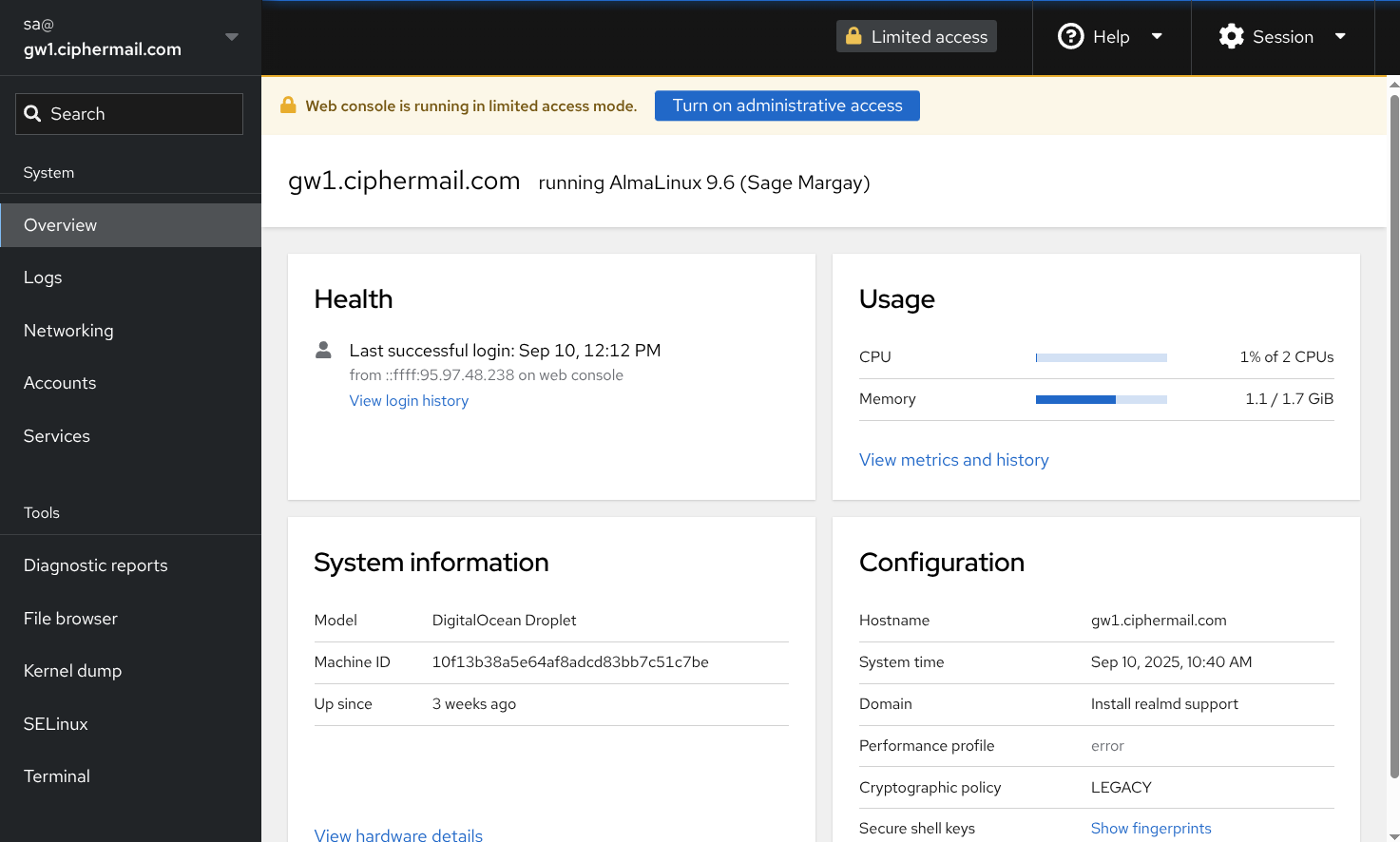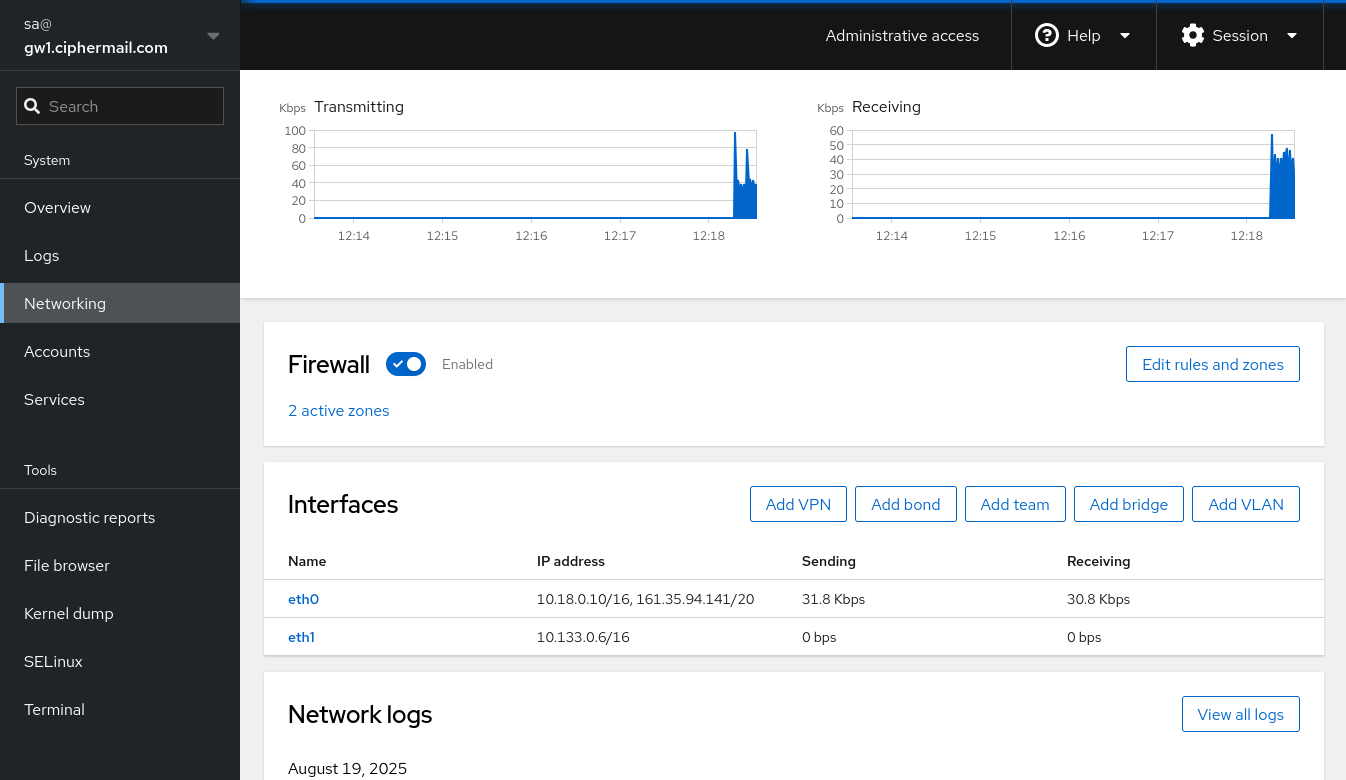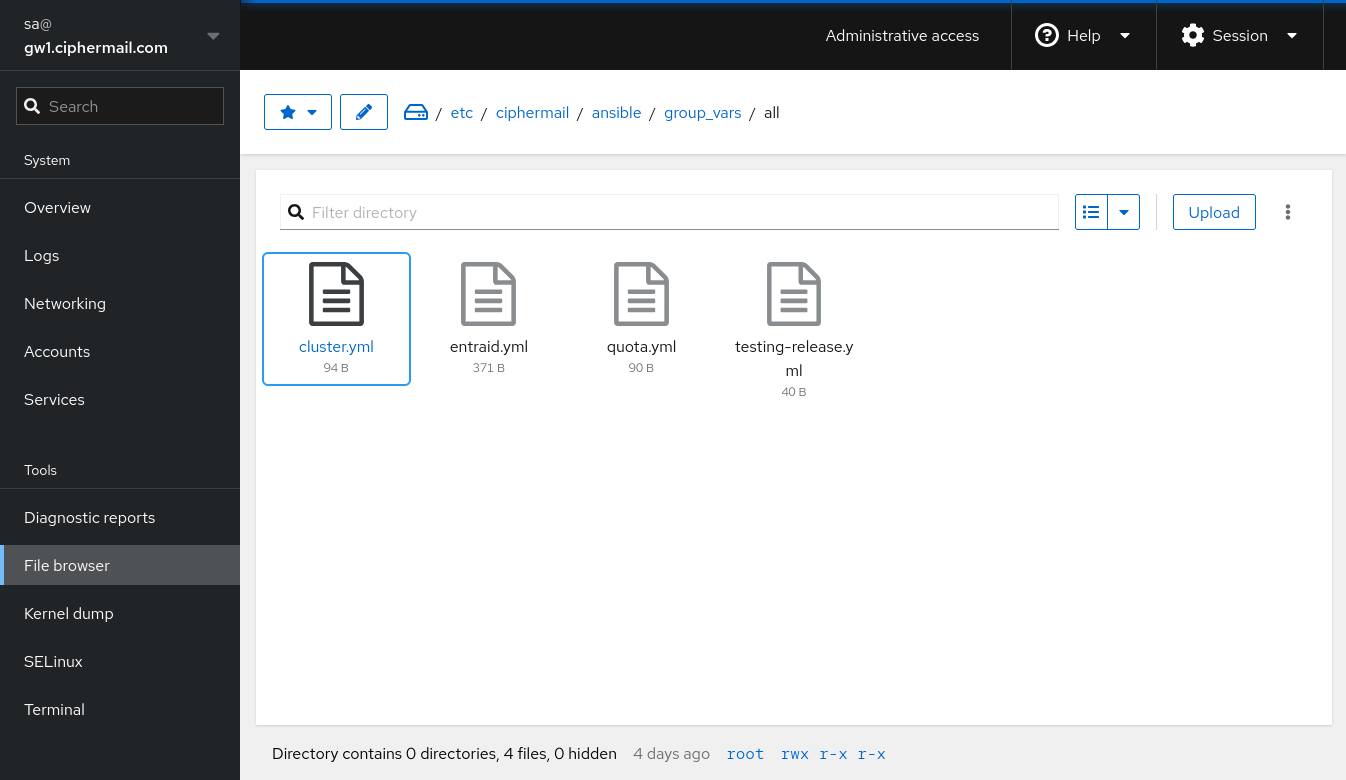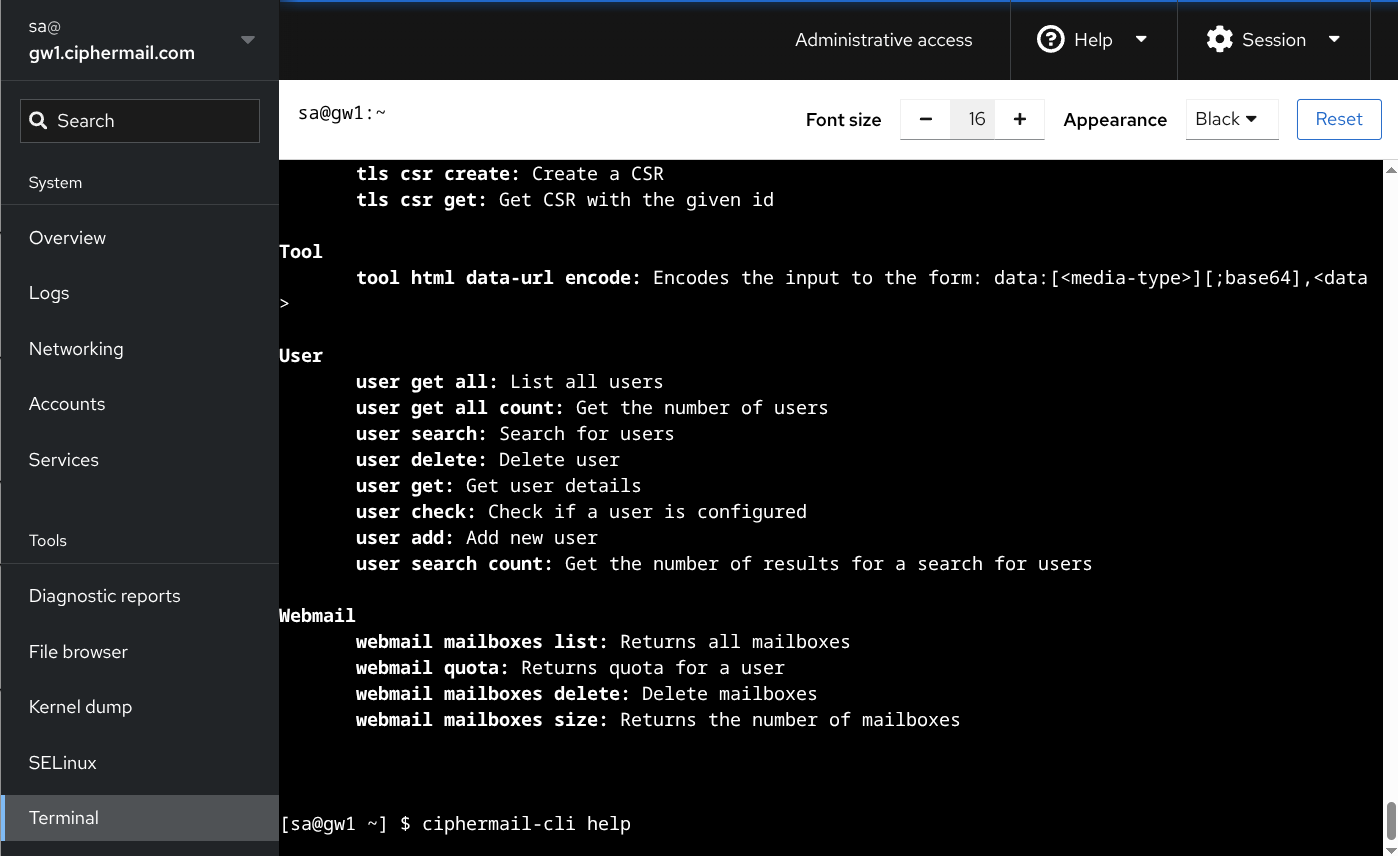Cockpit
Cockpit is a web-based management interface for Linux servers that lets you
monitor and configure your system directly from a web browser. After your server
has a working IP address, you can access Cockpit at https://<ip>:9090.
It uses the system’s standard authentication (PAM), so you can sign in with your regular server account.
With Cockpit you can:
View and change network settings (including hostname and DNS)
Create and edit files
Configure the firewall
Manage storage and filesystems
Inspect hardware and system metrics
Browse and search system logs
Manage user accounts
Open a terminal session in your browser
Switch between multiple servers from one interface
Caution
For security, restrict access to port 9090 so only administrator IP addresses can reach the Cockpit interface.
To login the Cockpit App:
Open the link
https://<ip>:9090in your web browserLogin as the sa user (using the password configured for the sa user)
This section provides a brief overview of the main Cockpit features.
For more information about the Cockpit application, see https://cockpit-project.org/
Dashboard
After you sign in, the Cockpit dashboard opens and displays an at-a-glance view of the server’s current status, including CPU and memory usage, storage and filesystem health, network activity, active services, and recent logs. Any detected issues are highlighted so you can address them quickly. From the dashboard, you can navigate to common tasks such as configuring the network and hostname, managing users, reviewing system updates, adjusting the firewall, and opening a web terminal.
Tip
If you see the message “Web console is running in limited access mode” at the top of the page, select “Turn on administrative access” to elevate your permissions.

Networking
Use the Networking page to view and modify network interfaces and manage the firewall. You can configure interface settings such as IPv4/IPv6 addresses, subnet masks, gateways, and DNS, and enable or disable interfaces as needed. In the firewall section, allow or block access to required services (for example, SMTP on port 25, HTTPS on port 443, the Admin UI on port 8443, or the Cockpit app on port 9090).

Accounts
Use the Accounts page to view, create, update, or remove Unix user accounts, and to add, edit, or delete SSH public keys. You can create new users, set or reset passwords, choose a default shell, assign group memberships, and manage home directory settings. For secure access, upload or paste SSH public keys in OpenSSH public key format; changes take effect immediately for future logins.

File Browser
Use the File Browser page to view and manage your files and folders.
What you can do:
Navigate through the file system using the folder tree or breadcrumb path.
Create new files and folders in the current location.
Open and edit files directly in the built-in editor.
Upload files from your computer; you can usually drag and drop or use the upload button.
Rename, move, and delete files or folders.
Search for files by name.

Terminal
Use the Terminal page to open a command-line session directly in your web browser. This is useful when you do not have an SSH client installed or when firewalls block SSH (port 22).
The browser-based terminal lets you run commands on the target system without additional software. To open a session, go to the Terminal page in the application and select Open Terminal. Your terminal session runs with the same permissions as your user account.
Use the terminal to run ciphermail-cli commands. This is useful for performing administrative tasks and troubleshooting.
